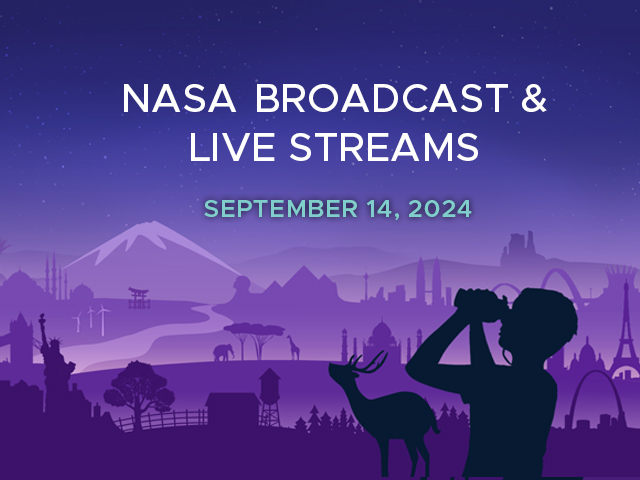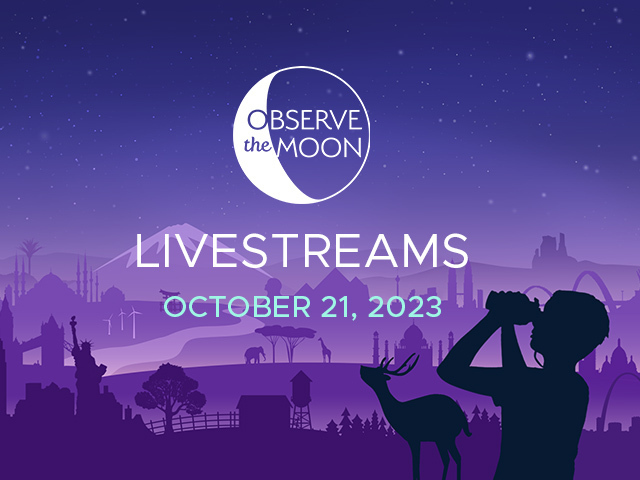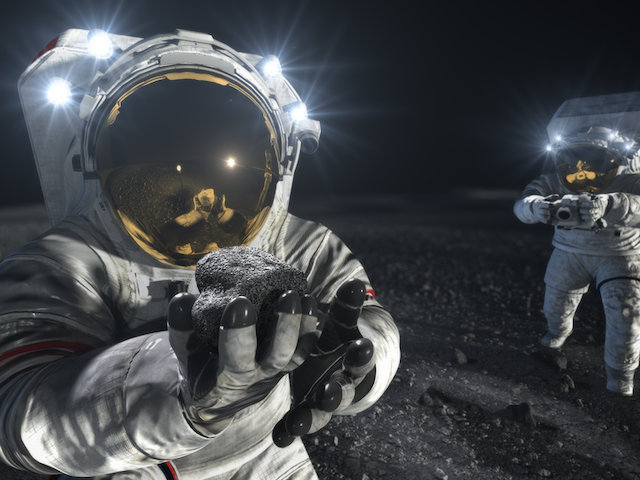News | March 28, 2017
Deep Space Gateway to Open Opportunities for Distant Destinations

Artist's concept of possible lunar orbiting spacecraft.
NASA is leading the next steps into deep space near the moon, where astronauts will build and begin testing the systems needed for challenging missions to deep space destinations including Mars. The area of space near the moon offers a true deep space environment to gain experience for human missions that push farther into the solar system, access the lunar surface for robotic missions but with the ability to return to Earth if needed in days rather than weeks or months.
The period of exploration in the vicinity of the moon will begin with the first integrated mission of the Space Launch System (SLS) rocket and the Orion spacecraft, and will continue as we explore further. NASA aims to begin a cadence of one flight per year after the second mission, and the agency has established an initial set of integrated human exploration objectives combining the efforts aboard the International Space Station, SLS and Orion, and other capabilities needed to support human missions to explore deep space.
Flight hardware for SLS and Orion is currently in production for the first and second missions, life support and related technologies are being tested on ISS, and habitation and propulsion development activities are also underway. NASA is working with domestic and international partners to solve the great challenges of deep space exploration. Missions in the vicinity of the moon will span multiple phases as part of NASA’s framework to build a flexible, reusable and sustainable infrastructure that will last multiple decades and support missions of increasing complexity.
Deep Space Gateway
This first phase of exploration near the moon will use current technologies and allow us to gain experience with extended operations farther from Earth than previously completed. These missions enable NASA to develop new techniques and apply innovative approaches to solving problems in preparation for longer-duration missions far from Earth.
In addition to demonstrating the safe operation of the integrated SLS rocket and Orion spacecraft, the agency is also looking to build a crew tended spaceport in lunar orbit within the first few missions that would serve as a gateway to deep space and the lunar surface. This deep space gateway would have a power bus, a small habitat to extend crew time, docking capability, an airlock, and serviced by logistics modules to enable research. The propulsion system on the gateway mainly uses high power electric propulsion for station keeping and the ability to transfer among a family of orbits in the lunar vicinity. The three primary elements of the gateway, the power and propulsion bus and habitat module, and a small logistics module(s), would take advantage of the cargo capacity of SLS and crewed deep space capability of Orion. An airlock can further augment the capabilities of the gateway and can fly on a subsequent exploration mission, Building the deep space gateway will allow engineers to develop new skills and test new technologies that have evolved since the assembly of the International Space Station. The gateway will be developed, serviced, and utilized in collaboration with commercial and international partners.
“I envision different partners, both international and commercial, contributing to the gateway and using it in a variety of ways with a system that can move to different orbits to enable a variety of missions,” said William Gerstenmaier, associate administrator for Human Exploration and Operations at NASA Headquarters in Washington. “The gateway could move to support robotic or partner missions to the surface of the moon, or to a high lunar orbit to support missions departing from the gateway to other destinations in the solar system.”
Deep Space Transport
The second phase of missions will confirm that the agency’s capabilities built for humans can perform long duration missions beyond the moon. For those destinations farther into the solar system, including Mars, NASA envisions a deep space transport spacecraft. This spacecraft would be a reusable vehicle that uses electric and chemical propulsion and would be specifically designed for crewed missions to destinations such as Mars. The transport would take crew out to their destination, return them back to the gateway, where it can be serviced and sent out again. The transport would take full advantage of the large volumes and mass that can be launched by the SLS rocket, as well as advanced exploration technologies being developed now and demonstrated on the ground and aboard the International Space Station.
This second phase will culminate at the end of the 2020s with a one year crewed mission aboard the transport in the lunar vicinity to validate the readiness of the system to travel beyond the Earth-moon system to Mars and other destinations, and build confidence that long-duration, distant human missions can be safely conducted with independence from Earth. Through the efforts to build this deep space infrastructure, this phase will enable explorers to identify and pioneer innovative solutions to technical and human challenges discovered or engineered in deep space.
To achieve the agency’s goal to extend humanity’s presence in the solar system will require the best research, technologies and capabilities from international partners and the private sector. NASA will look to partners for potential contributions of spaceflight hardware and the delivery of supplemental resources. The gateway and transport could potentially support mission after mission as a hub of activity in deep space near the moon, representing multiple countries and agencies with partners from both government and private industry. NASA is open to new ideas of both a technical and programmatic nature suggestions as we develop, mature and implement this plan.






